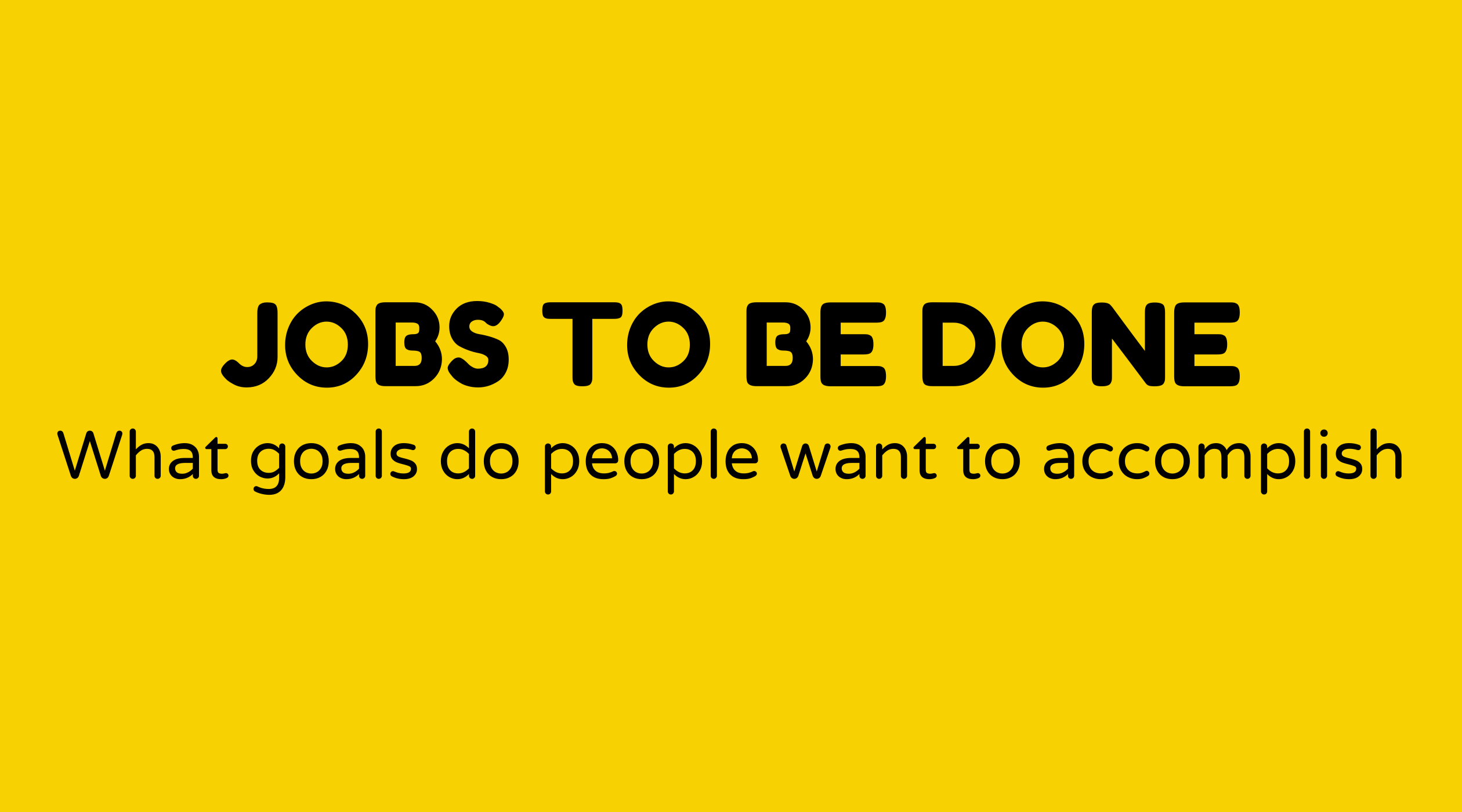Jobs to be done

Overview of Jobs to be Done
The Jobs to be Done (JTBD) framework focuses on understanding the true needs of your customer. This method goes beyond merely identifying who your customer is; it delves into what they are looking to achieve in their lives. It's not about the How-tos or When-tos; it's centered around the Why.
In essence, JTBD looks beyond conventional marketing tactics and demographic breakdowns. It operates on the principle that customers 'hire' products and services to complete particular tasks. This yields insights that reveal the real motivations behind consumption, enabling businesses to align their offerings more effectively.
You may have come across discussions surrounding JTBD in well-known publications. Esteemed sources like Harvard Business Review and thought leaders like Clayton Christensen have engaged with the concept extensively. This framework is not just a fleeting idea; it’s a well-founded methodology backed by numerous success stories.
Why Jobs to be Done Matters
Why should you be interested in Jobs to be Done? It all boils down to one key aspect: gaining a profound understanding of your customers. With JTBD, you aren’t just speculating on product features—it helps you identify what truly matters to your customers.
Think about product failures—not due to their quality, but because they don’t meet the actual needs of the users. Consider Blackberry: they had excellent technology but didn’t address the emotional and practical demands of modern smartphone users.
When businesses adopt JTBD, they create products and services that resonate with the unmet needs of their audience. Whether this involves driving product innovation, improving customer satisfaction, or outperforming rivals, this strategy delivers solutions. It addresses not only existing challenges but also reveals unrecognized ones.
What is Jobs to be Done
The Jobs to be Done framework, often referred to as JTBD, is a method for prioritizing innovation by understanding the tasks customers wish to accomplish. This approach is based on the idea that individuals don't merely purchase goods; they select them to make headway in specific areas of their lives.
The principles of JTBD can be likened to a journey, consisting of a starting point, a middle, and a fulfilling conclusion when the task is nearly accomplished. Break down these job-centered tasks into emotional, social, and functional elements to discover key components for success. Various factors come into play including motivations and desired outcomes.
Consider home improvement—no one buys a drill just for the tool itself. They purchase it with the goal of creating a hole in the wall.
How to Implement Jobs to be Done
Employing the Jobs to be Done framework entails understanding your customer’s challenges deeply. Here’s a straightforward approach to get started:
-
Identify Target Customers: Find the individuals whose tasks you want to concentrate on—these can be current clientele or prospective audiences.
-
Conduct Interviews: Engage in meaningful conversations. Ask open-ended questions that uncover the fundamental drivers of their tasks.
-
Analyze Jobs: Deconstruct jobs into primary, functional, and emotional components. Don’t ignore the social aspects—individuals often make choices to showcase a specific image.
-
Document Findings: Keep track of variations in customer behaviors and capture their terminology surrounding the tasks.
-
Innovate Solutions: Shift focus to designing offerings that not only meet these demands but also surpass customer expectations.
-
Implement & Iterate: Put strategies into action and refine them throughout the process.
Sample Agenda of Jobs to Be Done Workshop
Here’s a glimpse into how a standard JTBD workshop may be structured:
- Introduction (20 mins): Begin with an overview of JTBD. Clarify the objectives for the session.
- Customer Insights (40 mins): Review existing customer data. Identify gaps and recognize job opportunities.
- Break (10 mins)
- Deep Dive Interviewing (60 mins): Conduct live interviews or analyze case studies to uncover job-to-done methodologies.
- Lunch (60 mins)
- Task Analysis (90 mins): Decompose tasks into their emotional, functional, and social elements, supplemented by case examples.
- Solution Brainstorming (60 mins): Generate ideas that address customer needs and evaluate them against JTBD criteria.
- Closing (30 mins): Conclude with key takeaways and outline next steps.
Examples of Jobs to Be Done
Real-world applications of JTBD turn abstract concepts into actionable insights. Here are a few renowned instances:
- Airbnb redefined travel by identifying the 'task' of experiencing a location like a local.
- Dollar Shave Club tackled the hassle of frequent store visits for razors, focusing instead on the convenience of auto-delivery.
- Apple's iPhone was designed to fulfill the need for multiple devices in one—music, calls, internet.
FAQs
Can JTBD be utilized in service industries?
Definitely! Service sectors can leverage JTBD to discover customer aspirations. Think about restaurants, healthcare, and hospitality that concentrate on convenience and experience.
How does JTBD differ from User-Centered Design (UCD)?
While both emphasize clients, JTBD focuses on the 'tasks' customers wish to accomplish. UCD results in product designs that meet those needs, while JTBD identifies the reasons behind the purchases.
Is JTBD relevant in B2B contexts as well?
Yes, JTBD applies to both B2B and B2C markets. B2B organizations can gain insights into why businesses choose their services.
How can the effectiveness of JTBD be gauged?
Effectiveness can be assessed through customer satisfaction, the success of product offerings, and how well the identified 'jobs' are accomplished.
How often should a JTBD approach be revisited?
Regular reviews are advisable as market dynamics and customer needs shift, ensuring alignment with key customer "tasks."
Can the Jobs to Be Done method integrate with other methodologies?
Certainly, it complements agile methodologies and design thinking by providing insightful perspectives on customer motivations.



